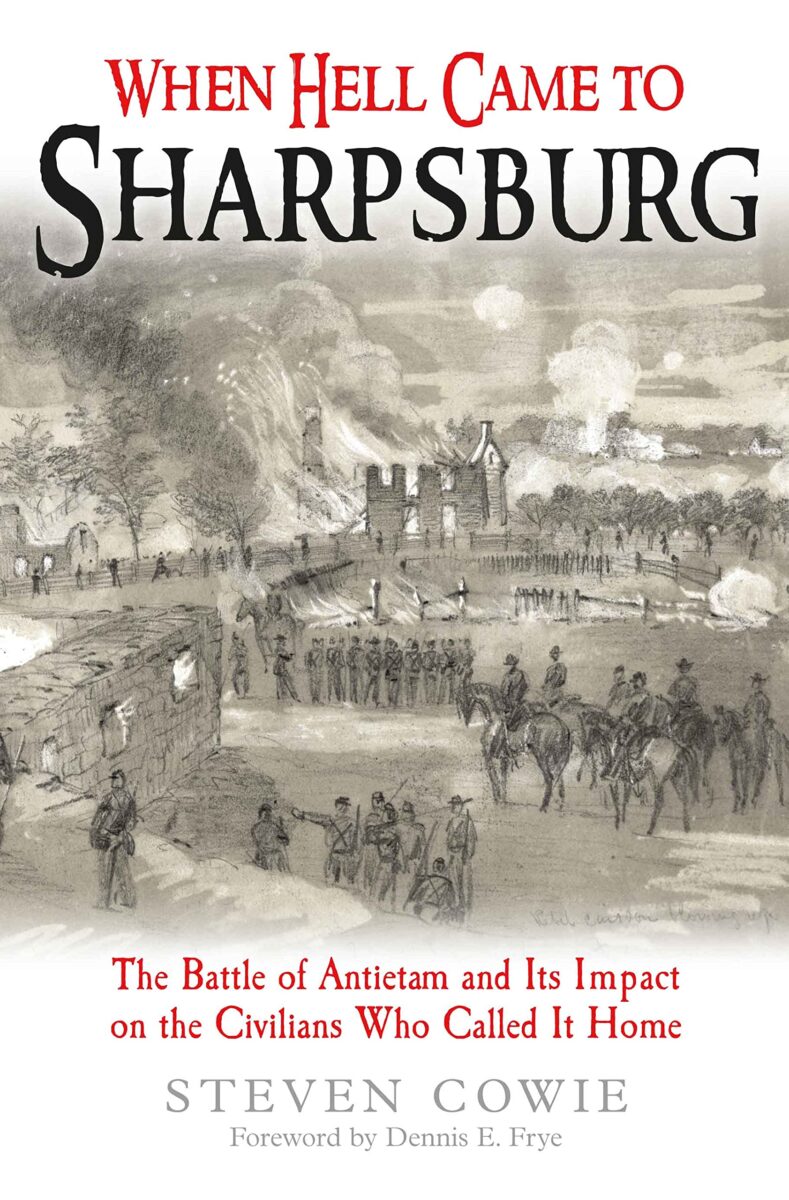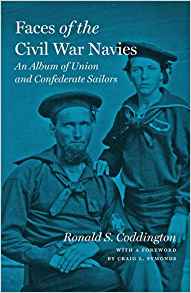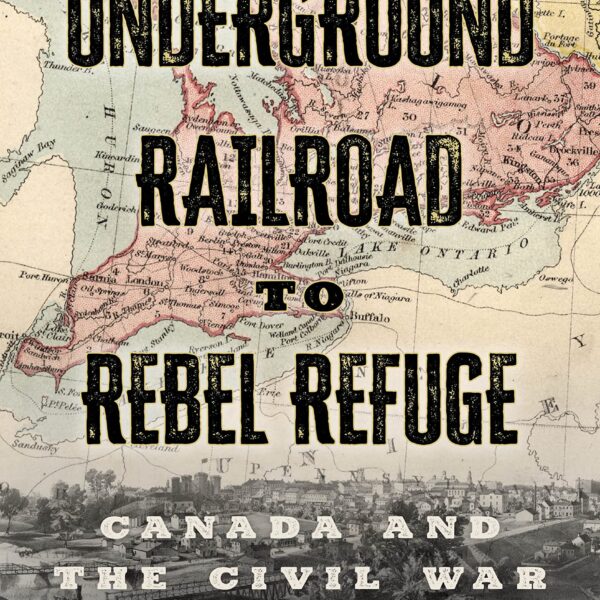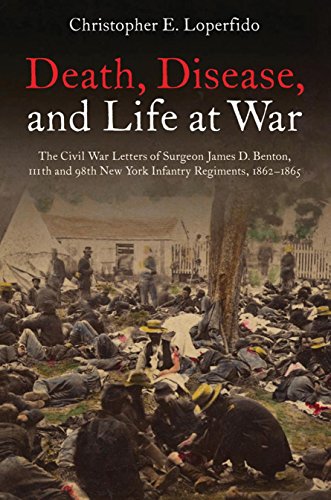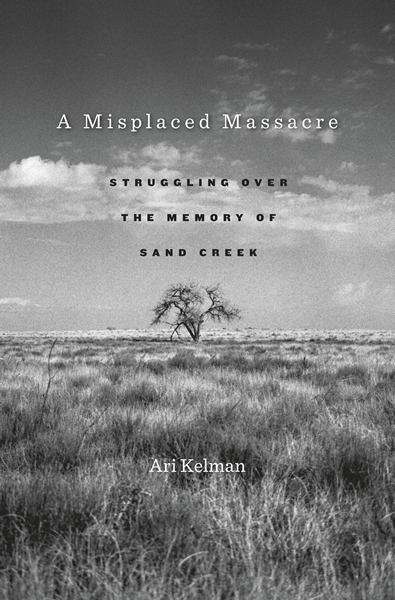When tallying the costs of Civil War battles, historians typically supply a register of soldiers killed, wounded, missing, or captured. Often, they consider how those losses resounded in hearts and hometowns far beyond the battlefield. Animated by insights gleaned from environmental history and histories of material culture, more recent scholars have begun to consider the scars battle left upon the natural and built worlds.1 Presenting an avalanche of evidence mined from damage claims and personal manuscripts, Steven Cowie’s When Hell Came to Sharpsburg offers the most comprehensive accounting to date of all that a Civil War battle did to an individual community. A passionate brief for the potential of an oddly underused source—postwar damage claims—the book presents a new model for historians working on the consequences of military campaigns. It amplifies the too-long neglected voices of civilians whose ordinary fields and farm lanes became proper nouns. And it lends even more weight to the Duke of Wellington’s insistence that “nothing except a battle lost can be half so melancholy as a battle won.”2
Cowie narrates the destruction the battle of Antietam visited on homes, farmsteads, and animals. The contending armies looted private houses and public stores. In need of horsepower for limber chests, artillery pieces, and ambulance wagons, soldiers pressed equines into military service (60, 65). A steady rain of shells pocked walls, set fires, and prompted civilians to evacuate their homes. “Most battlefield farms received the wrath of infantry and artillery fire from both armies,” the author observes. “Combat crushed crops, destroyed fencing, and killed livestock” (83). Cowie hints at the psychological consequences of combat on civilians—especially young children made to witness “artillery explosions, shrieking patients, horrible wounds, dead bodies, and other upsetting scenes” (105, 151).
Yet as devastating as the battle was for Sharpsburg and surrounding communities, the aftermath of Antietam invited even greater challenges. Properties already ravaged by the fighting suffered further depredations as surgeons made houses into makeshift hospitals. Families were evicted from their homes—or else herded into a single room as groaning and gangrenous patients filled the others. Nor did it help matters that the Baltimore & Ohio Railroad bridge spanning the Monocacy River had been destroyed, short-circuiting the delivery of provisions and medical supplies; predictably, civilian pantries remedied urgent needs (118). Burial crews filched “shovels, mattocks, spades, and digging irons”—then used the confiscated implements to turn cornfields into boneyards (109). Families seeking the remains of dead loved ones (not to mention curiosity-seekers and relic hunters on grisly errands) flocked to the fields in the weeks and months after the battle, ensuring there would be no return of normalcy (213).
As if this was not enough, McClellan’s Army of the Potomac remained moored in the Antietam Valley for six long weeks. In that time, soldiers “ate families out of house and home,” exchanging “verbal assurance of later payment” for coffee, salt, sugar, flour, butter, fruits, and vegetables (190-191). “The average farmer,” Cowie notes, “lost more than $400 in standing corn, fodder, and old corn after the battle”—a figure that exceeds $11,000 today (245). Whatever livestock remained ranged freely, as fence rails fueled campfires (277). Occupying soldiers denuded the land of trees, which doubtless contributed to flooding. Nor were all impacts felt immediately or made readily obvious. “Ubiquitous” army camps and trundling wagons “trampled freshly-tilled land, packing soil so firmly that many farmers needed to replough their fields before planting wheat” (261). And months after the Army of the Potomac left, farmers turned up shallow graves, buried shells, and unexploded ordnance (358).
The post-battle occupation of Sharpsburg presented a man-made public health disaster. Human feces “fouled the groundwater,” as did the bloated bodies lowered into hastily dug graves (313). “Animal waste,” the author continues, “not only fouled the air but created a serious health risk” (312). An “epidemic” of contagious disease, as documented by a local physician whose records Cowie quarries, “sickened hundreds of people after the battle” (305).
When the Army of the Potomac finally abandoned Sharpsburg, local men and women were left to take inventory of all that the war wrought. Those waiting in vain for “board of survey” claims (requests for remuneration submitted to army officials before they left) did so by making fresh applications under the so-called “Act of July 4, 1864,” which adjudicated “war-related damages and losses” (383). Not unlike pensions for disabled veterans, claims filed under this legislation had to adhere to a rigorous evidentiary standard. Property owners not only had to demonstrate their loyalty to the United States, but were not permitted to receive reimbursement for property damaged or destroyed in combat (384-385). Protracted battles with the federal government ensued. More than a few Sharpsburgers sought either new opportunities or an escape from their past in the west; nearly all “teetered on economic insolvency” (442).
Cowie’s work is clearly a labor of love. This may explain why he often piles up example after example where one or two would suffice to advance his point. On the other hand, the book’s exhaustive catalogue of physical and environmental destruction packs an emotional punch—and supplies readers with an intimate, almost “real time” narrative of Antietam’s aftermath. It makes the case that there were many battles of Antietam fought after September 17, 1862.
Original cartography, a survey of Sharpsburg’s town lots, and dozens of rarely-seen photographs are alone worth the price of the book. When Hell Came to Sharpsburg will be required reading for anyone interested in the Maryland Campaign.
Brian Matthew Jordan is Associate Professor of U.S. Civil War History and Chair of the History Department at Sam Houston State University.He authored an essay on Antietam’s aftermath in Charles W. Mitchell and Jean H. Baker, eds., The Civil War in Maryland Reconsidered (2021).
